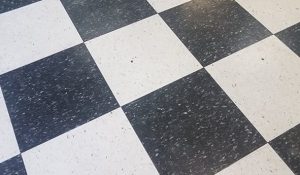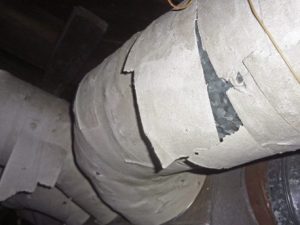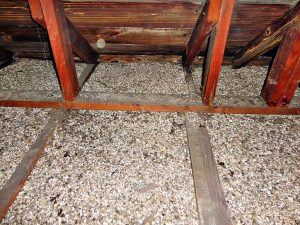I Found Asbestos in My Home. Do I have to remove asbestos from my home?
I Found Asbestos in My Home. Do I have to remove asbestos from my home?
Finding asbestos in your home can be a concerning discovery. At Winmar® Nelson, we understand the anxiety that comes with this realization. To help you understand where to go from here, this is what you need to know about asbestos in your home and whether removal is always necessary.
What Is Asbestos and Why Is It a Concern?
Asbestos is a naturally occurring mineral once widely used in construction materials due to its durability, tensile strength, and heat resistance. However, it’s now known that asbestos fibers can cause serious health issues, including lung cancer, asbestosis, and mesothelioma when inhaled. Asbestos is deemed an ALARA (as low as reasonably achievable) substance by the CDC (Center for Disease Control) meaning that there is no safe level of exposure, and any amount of exposure may lead to health problems.
Assessing the Situation: When Asbestos Removal Is Necessary
If you hired Winmar® Nelson to arrange hazardous materials testing of your home, the condition of the Asbestos-Containing Material (ACM) is always identified by the experienced and qualified sampler, and clearly labeled in our hazardous materials report.
——–
Condition of Asbestos Material:
Good Condition: If the ACM is in good condition and not disturbed, it may not pose an immediate risk. Intact and undisturbed asbestos is less likely to release harmful fibers into the air.
Damaged or Deteriorating Condition: If the ACM is damaged, deteriorating, or likely to be disturbed during renovations or daily activities, it can release asbestos fibers and pose a health risk.
Friability of Asbestos Material:
Friable: Friable materials are those that you can crush in one hand. These materials tend to release more fibers when removed.
Non-Friable: Non friable materials cannot be crushed with one hand. These materials tend to release less fibers when removed.
Location of the Asbestos:
Hidden vs. Exposed: Asbestos in hidden areas (e.g., behind walls, inside your attic) is less of a concern than asbestos in exposed areas (e.g., floor tiles or exposed HVAC wrap).
High-Traffic Areas: Asbestos in areas where it is likely to be disturbed, such as in frequently used rooms, should be addressed promptly.
Potential for Disturbance:
Future Renovations: If you’re planning renovations in and around the asbestos, asbestos should be removed to prevent accidental disturbance.
Daily Use: Consider how the area is used daily. Regular disturbance can increase the risk of fibre release. For example, if you have vinyl flooring that contains asbestos in your entry way and you frequently clear snow with micro spikes on your boots and then walk into your porch, you could be disturbing the asbestos each time you walk on it.
Options for Managing Asbestos
Leave It Alone:
If the asbestos is in good condition and unlikely to be disturbed, it can often be left alone but should be regularly monitored for any signs of deterioration.
Encapsulation:
This involves covering the ACM with a sealant to prevent fibres from being released. Encapsulation is a temporary solution and still requires regular monitoring. Examples are if you just moved into a house and you found HVAC tape in poor condition. We would recommend emergency encapsulation, until it can be safety abated.
Enclosure:
Enclosing involves building a barrier around the ACM to prevent disturbance. It can either be a temporary measure (such as poly and tape over a damaged ACM) or a permanent measure such as installing a floating floor over asbestos vinyl floor tiles. Enclosure still requires ongoing monitoring, but on a less frequent interval.
——–
Real World Examples:
Asbestos-containing vinyl floor tiles in good condition below a layer of laminate floor. We would not recommend abating these, unless you are planning a renovation that will disturb the tiles. For example, if your subfloor is creaking, unlevel, or moving when you walk on it. The tiles are non-friable, in good condition, and enclosed by another layer of flooring.
Asbestos containing HVAC wrap that is exposed in an occupied basement. We would recommend abating this, as it is a highly friable material and exposed to occupants. With highly friable materials, sometimes air currents in your home can cause disturbance of the very fine fibers, causing them to become airborne.
Vermiculite in your attic. We recommend abating this if you are planning on accessing your attic, reinsulating, or installing pot lighting in the ceiling below. If you are not planning on completing a renovation that would disturb it, we would often recommend you leave it as-is, but restrict access to the attic. One thing to keep in mind is that having asbestos in your home may devalue your home upon sale. For more reading on this, check out our blog post “why a home inspection is not enough”
Professional Removal:
If the asbestos is damaged, deteriorating, or will be disturbed by renovations or daily activities, professional removal is the safest option. Certified and licensed asbestos abatement professionals, like those at Winmar Nelson (asbestos abatement license AAL-00001039), can safely remove and dispose of asbestos to ensure your home is safe.
Why Choose Professional Asbestos Abatement?
Removing asbestos is NOT a DIY project. Handling asbestos improperly can increase health risks to not only yourself, but everyone who visits your home in the future. Your parents, grandparents, children, friends, and any contractor who enters your home may all become exposed to cancer-causing asbestos fibres if you DIY the work. Like excessive speeding, you’re not just putting yourself at risk but the passengers in your car, pedestrians on the highway, and other cars on the road.
Certified professionals have the training, experience, and equipment to safely manage asbestos removal. It is not easy to become a licenced abatement contractor, as it is a highly regulated industry due to the level of hazard involved. At Winmar Nelson, our team follows strict safety protocols and regulations to ensure your abatement is performed properly, and that your home is safe for your family and friends to re-occupy once we are finished.
Conclusion
Finding asbestos in your home doesn’t automatically mean you need to remove it. The key is assessing the condition, location, and potential for disturbance of the asbestos-containing material. When in doubt, consult with a professional. Winmar® Nelson is here to help you navigate your options and ensure the safety of your home and loved ones.
Understanding our clients needs and reasoning is what defines us as restoration professionals, and as a top-tier contractor. Sure, we would love to remove all asbestos from your home, but although this provides us with more work it is often unnecessary. When we meet with our customers, we want to understand why we are there, what the risk is, what problem we can help them solve, and always tailor our approach to keeping their best interests in mind while being mindful of cost.
If you have questions or need a professional assessment or asbestos abatement, contact Winmar Nelson today. Your safety is our priority.



